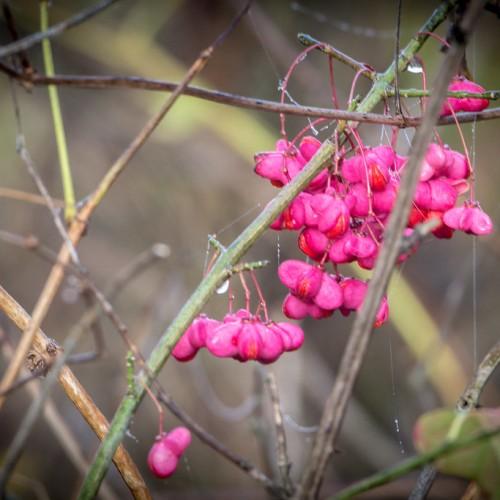
eastern wahoo
Euonymus atropurpureus
Cycle:
Perennial
Watering:
Average
Hardiness Zone:
3 - 7
Flowers:
Flowers In Summer
Sun:
Full sun,part shade
Fruits:
Fruits Ready In Fall
Leaf:
Yes
Growth Rate:
Low
Maintenance:
Low
Drought Tolerant:
Yes
Salt Tolerant:
Yes
Thorny:
Yes
Care Level:
Moderate
watering
The Eastern Wahoo requires regular watering to stay healthy. It’s best to water the plant in the morning or evening when temperatures are cooler. During the summer months, water the plant thoroughly every 7 to 10 days. In the winter, water it less frequently (about every 3 weeks). Make sure the soil is moist (not soggy) and ensure that the entire root system is getting watered. Avoid wetting the foliage to minimize the spread of disease.
sunlight
Eastern wahoo will thrive in full sunlight during the spring and summer months when the temperature is warm. During the cooler months of fall and winter, eastern wahoo should be exposed to morning sunlight for about 4 hours. This should be sufficient to provide the plant with the light it needs to carry out photosynthesis, but during these months, direct sun exposure should be avoided in order to prevent too much stress and shock to the plant.
pruning
Eastern wahoo should be pruned in late winter to early spring. Pruning helps to reduce the size of the plant and encourages thicker, healthier growth. It is best to remove unhealthy or dying branches first up to the point of healthy growth. Weak branches should be removed as well, ensuring that the majority of the growth is healthy and able to withstand elements such as wind and snow. Major pruning should only be done when necessary, and should never reduce the plant’s overall size to less than 1/3 of its original size as this would damage the plant. Minor pruning should be done throughout the season to remove dead or damaged branches, and small amounts of thinning can also be done to enhance shape and form.
